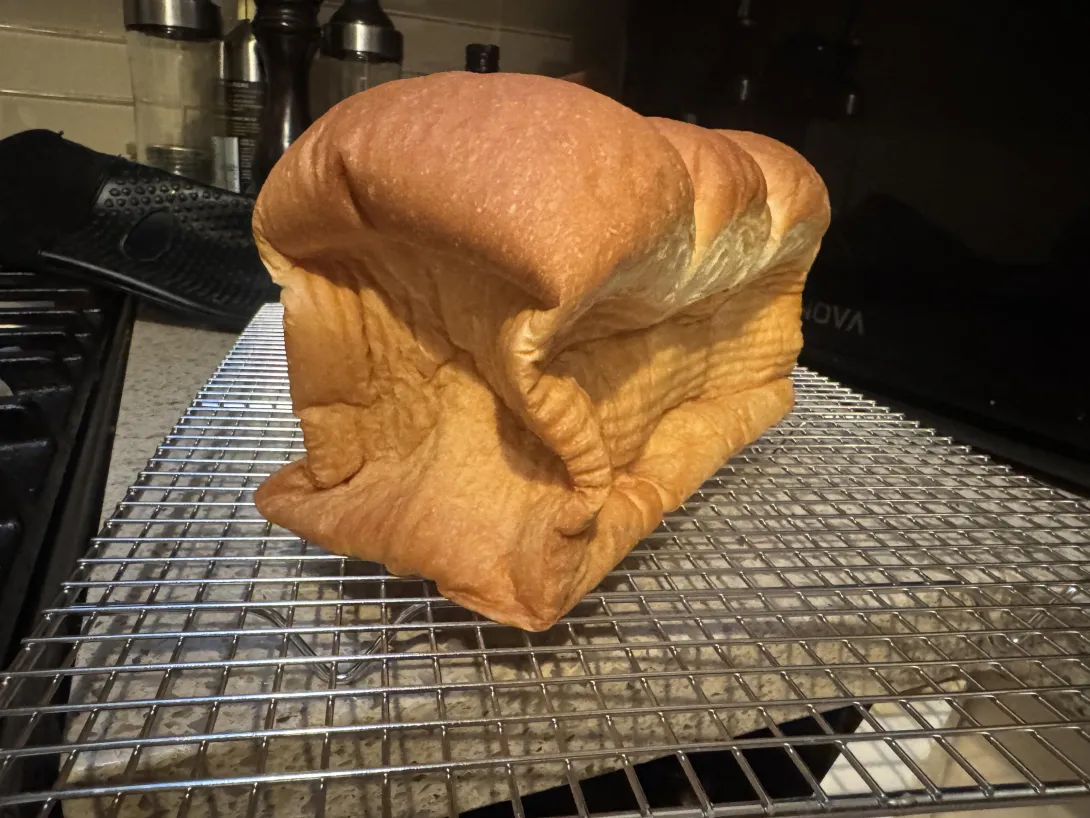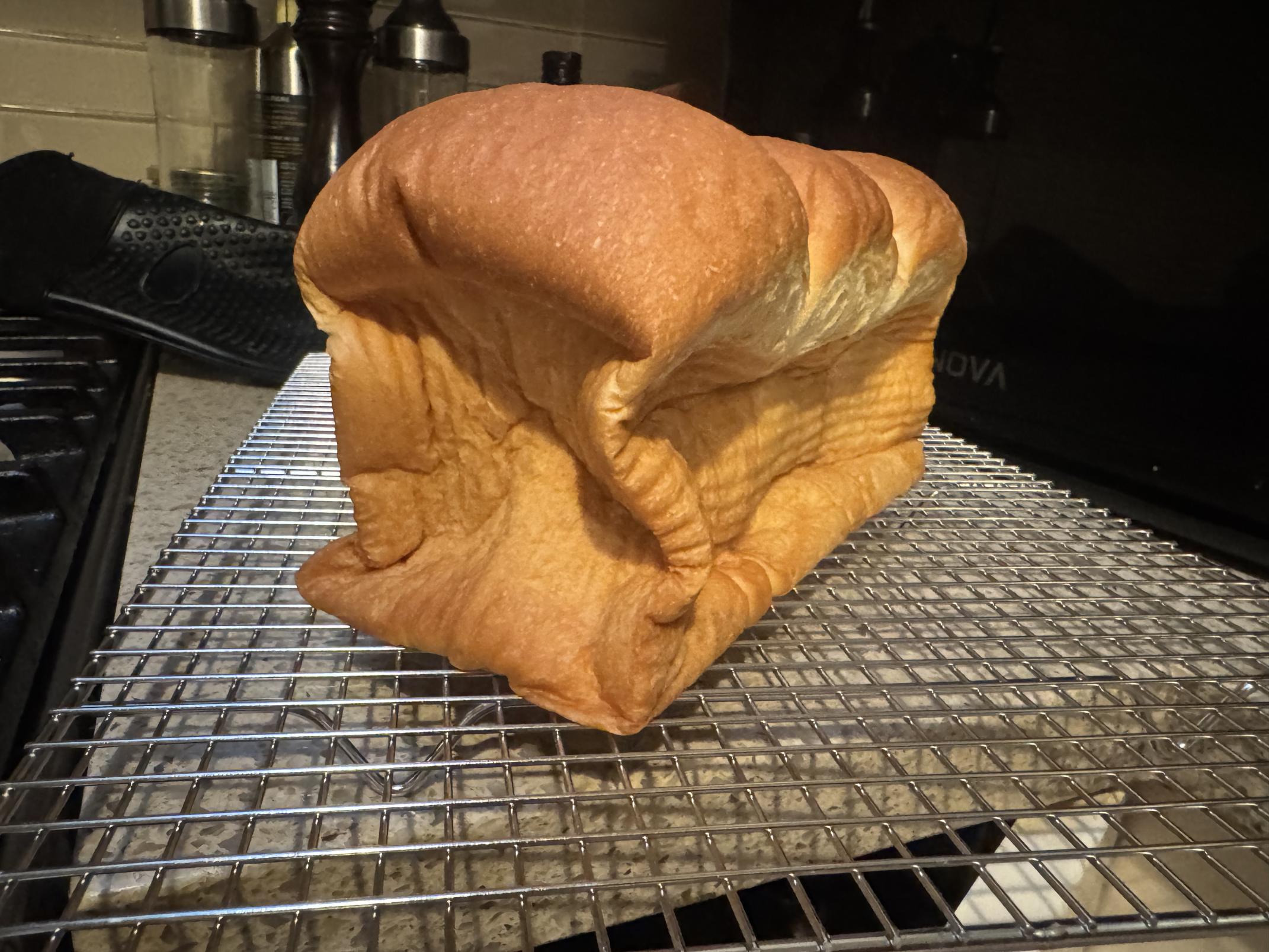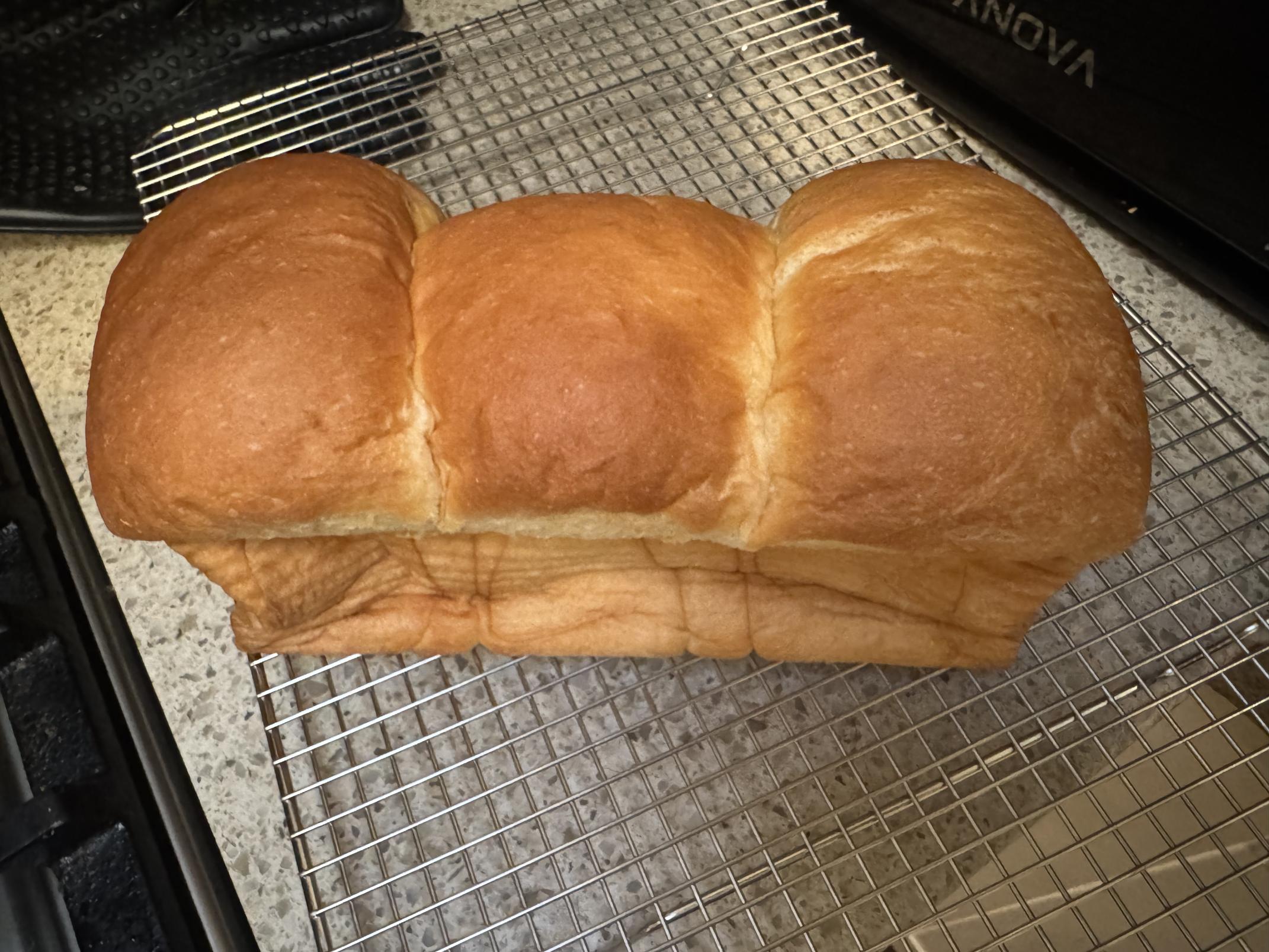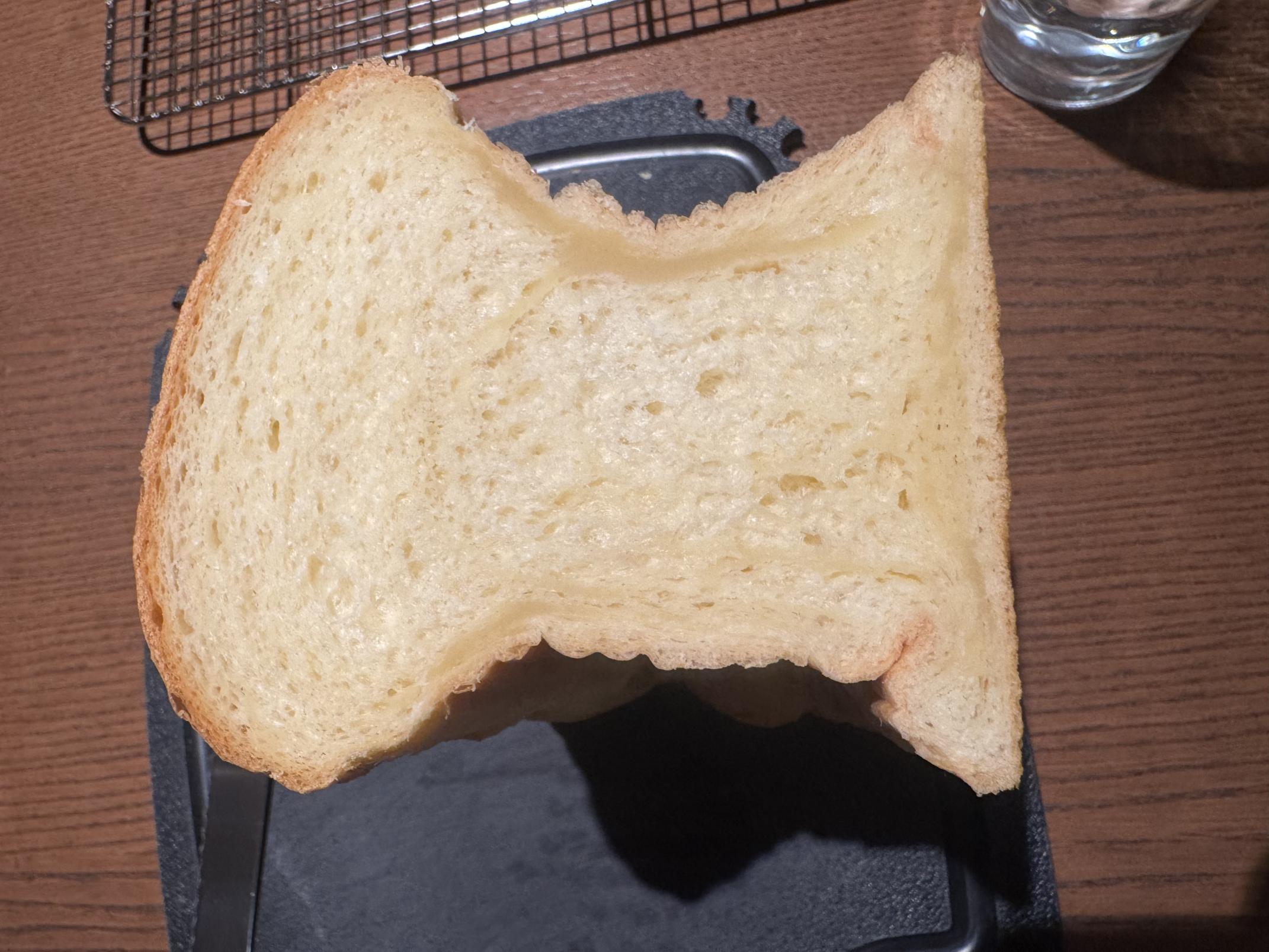
Hi,
I’m following the serious eats shokupan recipe: https://www.seriouseats.com/shokupan-japanese-milk-bread-recipe-8605016
I’ve made this recipe about a dozen times. Sometimes it turns out perfectly, other times it compresses inwards a little bit but still very enjoyable. Last time, it compressed so much that it was inedible 😔 if you look closely at the crumb picture, you can see that the middle looks ok, but there is a very dense layer near the edge that looks and tastes like thick dough.
Im following the recipe to a tee with zero modifications. The dough looks and feels the same every time - it rolls out nicely, it looks pillowy and rises right up to the lip of the 9x5 loaf pan, my room temp, humidity, and oven temp are consistent, the top always looks beautiful when baking, and I always check that the internal temp is above 195F (usually pull out around 200).
Obviously I am doing something different when the bread compresses inwards, but I can’t figure it out! Any ideas would be greatly appreciated. Thank you!



The keywoard is keyholing ;) Afair there was already a discussion on this topic in the forum. There is also an article on this subject in the worldloaf newsletter:
https://newsletter.wordloaf.org/the-other-side-of-the-keyhole/
Oooooh thanks! I was searching with lots of other words - collapsing, compressing, shrinking, etc. and couldn't find any good information. Will read this and do more searching with the keyword keyholing. Thank you!!
Your loaf looks like it had a vacuum hose in the middle sucking all the gas out! That goes way beyond a collapse of weak sidewalls.
Now that I've read the story posted on WordLoaf, I have a thought. If the main problem is shrinkage of gas pockets during cooling, how about a very slow cooling cycle? Near the end of the baking period, start stepping the oven temperature down little by little so the bread has a better change of equalizing pressures and stiffening up without experiencing a large change in internal pressure because of rapid cooling.
TomP
yes, it does go way beyond a collapse of weak sidewalls. I suppose a slow cooling cycle could work, but I cool it the exact same way every time, and most of the time I don't get keyholing. Might be worth trying to step down the temp. Thanks for the advice!
BTW, this dense wet looking layer near the edge you mentioned is imo a separate issue and not related to keyholing. Might be caused by the heat distribution during the bake, especially at the beginning. Not enough bottom heat and heat from the side. But it could also have another reason.
Yes, after making this recipe about a dozen times, this is the only time I've ever seen the dense layer near the edge. Very puzzled
While developing this recipe, the author had lots of trouble with keyholing. IMO there are some things about this recipe that make it more difficult.
First, the use of rice flour rather than wheat flour for the yudane. In my experience this is much harder to succeed with. Then, the amount of dough relative to the pan size suggests over-proofing. Not enough substance to support the structure leads to collapse.
I make a lot of shokupan but not this way. There are many recipes online that do not require shape retarding, egg enrichment, etc. to produce a nice loaf.
Yes, I've made other easier shokupan recipes with good results. However, when this recipe works, it's definitely my favourite - absolutely perfect texture and flavour, better than anything I've bought from local artisan bakers. I'd love to troubleshoot this one before giving up :) Appreciate the advice!
This is our most recent discussion. Lance's (albacore's) post is most useful. The loaves here also had the doughy sides.
Wonderful, thank you!!